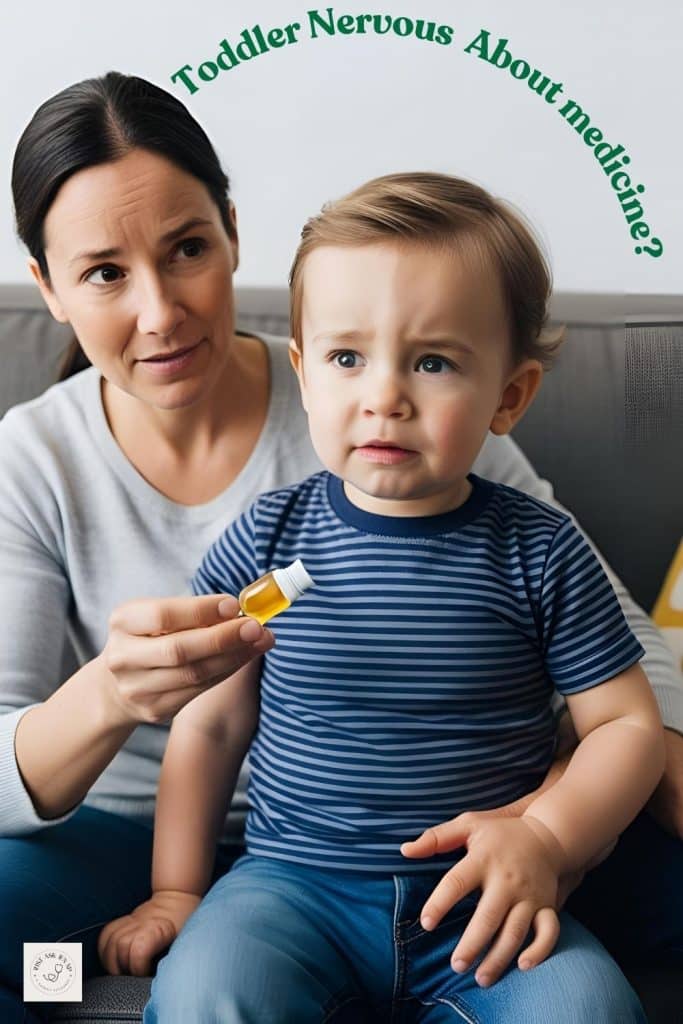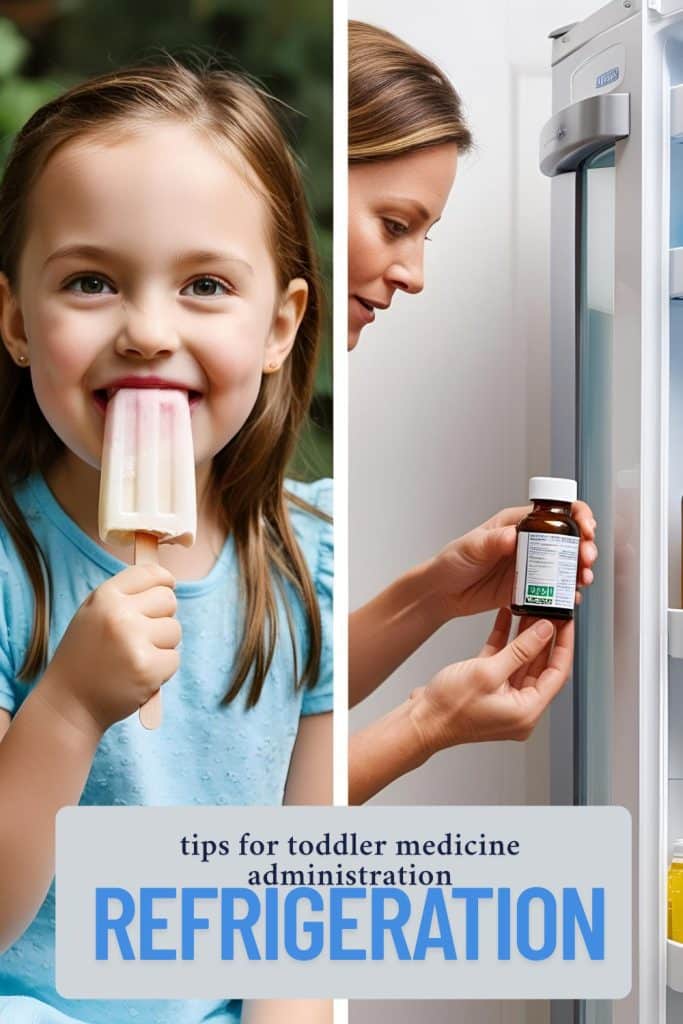12 Nurse-Approved Tricks To Help Your Toddler Take Medicine
IntroductionAs both a nurse practitioner and a parent, I’ve been on both sides of the medicine standoff. I understand the frustration of knowing your child needs medication to feel better, only to watch them clamp their mouth shut, turn their head away, or worse—spit out the carefully measured dose you finally got into their mouth.
The good news? After years in pediatric care, I’ve collected effective strategies that work even with the most resistant toddlers. In this post, I’ll share practical techniques to help your toddler take medicine. These aren’t just theoretical suggestions—they’re tried and tested approaches I’ve recommended to countless parents in my practice.

Understanding Why Toddlers Resist Medicine
Before diving into solutions, it helps to understand the resistance:
- Bitter taste detection: Children have more taste buds than adults and are particularly sensitive to bitter flavors (which many medicines have).
- Need for control: Toddlers are in a developmental stage where asserting independence is crucial.
- Previous negative experiences: One bad experience can create lasting resistance.
- Texture sensitivity: Some children are particularly sensitive to unfamiliar textures in their mouth.
Knowing your child’s specific objection can help you choose the most effective approach.
Technique #1: The Right Delivery Tools
Medicine Dispensing Pacifier
For younger toddlers who still use pacifiers, a medicine-dispensing pacifier can be incredibly effective. These clever devices look like regular pacifiers but include a small reservoir that slowly releases medication while your child sucks.
Why it works: The sucking reflex is comforting to children, and the medicine is delivered gradually to the back of the mouth, bypassing many taste buds.
Tip: Practice first with water or juice so your child gets used to the slightly different sensation.
Oral Syringes vs. Droppers vs. Cups

For direct administration, oral syringes typically offer the most control. They allow you to place medicine precisely where it will be less tasted—along the inside of the cheek toward the back of the mouth.
Why it works: Precise placement helps medicine bypass most taste buds, reducing the chance of rejection.
Tip: Never force the plunger while your child is crying or resisting actively—this creates a choking hazard. Wait for a calm moment or try another approach.
Medicine cups are helpful for the independent toddler who you can trust not to spill it. But I like to measure with an oral syringe to be sure the dose is correct. Then offer choices to your toddler- which would they like to take their medicine from- the syringe or the cup?
Medicine droppers are only useful for drops that you plan on counting into another source- a spoon with applesauce, a cup of water, etc. Most useful for probiotics that are typically too small of a dose to use with a syringe.
Technique #2: Temperature Tricks
The Numbing Effect
Offering something cold just before medicine can temporarily numb taste buds and make bitter medicine less detectable.
What to try:
- Frozen fruit piece (appropriate size to prevent choking)
- Ice chip for older toddlers (supervised)
- Popsicle for a quick pre-medicine taste bud numbing
Why it works: Cold temperatures temporarily reduce taste sensitivity, making medicine less offensive.

Temperature of Medicine
Some medications can be safely refrigerated to reduce their smell and taste intensity. Always check with your pharmacist first, as cold temperatures can affect some medications.
Tip: For medications that can be refrigerated, the cooler temperature often makes them more palatable.
Technique #3: Flavoring Strategies
Pharmacy Flavoring
Many pharmacies offer flavoring services for prescription medications. Popular options include:
- Bubblegum
- Grape
- Cherry
- Watermelon
- Chocolate
Why it works: Professional flavoring systems are designed to mask medicine taste without affecting the medication’s efficacy.
Cost: Usually $2-5 per prescription, and often worth every penny.
At-Home Flavoring (When Appropriate)
For certain medications, you may be able to add flavoring at home. Always check with your pharmacist before trying these:
- Mix with a small amount of chocolate syrup
- Blend with 1-2 teaspoons of applesauce or sweetened yogurt
- Stir into a spoonful of honey (for children over 12 months only)
- Add to a tiny amount of maple syrup
- A small amount of KooAid drink mix, or similar mix
Important safety note: Never mix medication into a full drink or food portion, as you can’t ensure your child will consume all of it, potentially resulting in under-dosing.
Technique #4: Distraction and Positioning to Help Your Toddler Take Medicine
The Optimal Position
Proper positioning can make medication administration safer and more effective:
- For younger toddlers: Create a slight incline with their head slightly elevated, never flat on their back
- For older toddlers: Sitting upright but with head tilted slightly forward
Why it works: These positions reduce the risk of choking and give you better access and control.
The Power of Distraction
Engage your child’s attention elsewhere during medication:
- Play a favorite short video
- Use a musical toy
- Have them blow bubbles immediately after (encouraging swallowing)
- Count together or sing a quick song
Tip: Reserve special distractions exclusively for medicine time to maintain their novelty.
Technique #5: Reward Systems That Work
Immediate Small Rewards Help Your Toddler Take Medicine
Offering an immediate reward after successful medicine-taking can be very effective:
- Stickers
- Stamp on hand
- 2 minutes of a special activity
- Small healthy treat
Why it works: The positive association helps override negative feelings about the medicine itself.
Medicine Routine Charts
For ongoing medication needs, create a visual chart that:
- Shows when medicine is needed
- Allows space for stickers/markers when completed
- Leads to a small reward after several successful doses
Tip: Let your toddler help create and decorate their chart to increase their investment in the process.
Technique #6: Alternative Medication Forms
Beyond Liquid Medicines
If liquid medications consistently fail, discuss these alternatives with your healthcare provider:
Chewable tablets:
- Often better-tasting and available for many common medications
- Usually appropriate for children 2+ who can reliably chew
- Come in various flavors and sometimes character shapes
Melt-away or dissolving tablets:
- Dissolve on the tongue without water
- Often have improved taste masking
- Good option for children who refuse to swallow anything
Suppositories:
- Available for common medications like acetaminophen (Tylenol)
- Bypass taste issues completely
- Particularly useful when a child is vomiting
Compounded medications:
- Custom-prepared by special pharmacies
- Can be made into lollipops, gummies, or uniquely flavored options
- May be covered by insurance with prior authorization

When to Avoid Certain Approaches
Methods I Don’t Recommend
As a healthcare professional, I advise against:
Calling medicine “candy”:
- Creates dangerous confusion about medicine safety
- Sets up potential for accidental overdose
- Sends mixed messages about what’s medicine vs. treats
Physically forcing medication:
- Creates trauma around medicine
- Risks aspiration or choking
- Damages trust
Mixing in full portions of food:
- Risks incomplete dosing
- Can create aversions to those foods
- Makes it difficult to track how much medicine was actually consumed
For Persistent Refusers: When to Call Your Provider
If you’ve tried multiple approaches without success, contact your healthcare provider to discuss:
- Alternative formulations
- Different medication options with similar effects
- Compounding possibilities for prescription medications
- Whether the medication is absolutely necessary or if alternatives exist

My Top Three Product Recommendations to Help Your Toddler Take Medicine
While techniques are most important, these three products have consistently helped families in my practice:
- Medicine Dispensing Pacifier – Ideal for younger toddlers who use pacifiers
- Flavoring Drops – Pharmacist-approved drops that can be added to certain medications [affiliate link]
- Sticker Chart
Conclusion: Consistency Is Key
Whichever techniques you try, consistency builds success. Your calm confidence during medicine time sets the tone for your child’s experience. Remember that this challenging phase is temporary, and the skills you’re both learning will make future healthcare experiences smoother.
As both a nurse practitioner and someone who’s faced toddler medicine battles at home, I can assure you that finding the right approach makes all the difference. Your child gets the medication they need, and you get to skip the twice-daily wrestling match. That’s a win for everyone’s health—physical and emotional.
For a dosage sheet on Motrin and Tylenol, check out this link https://justaskjennp.com/pediatric-medication-dosage-guide/

